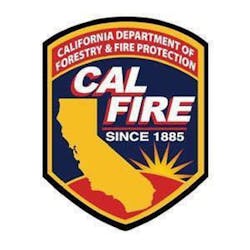CA Governor Wants $40M for More CAL FIRE Firefighters
California is facing the worst wildfire conditions in its history with fewer engines and firefighters than it had 40 years ago, says a group of lawmakers and fire unions asking Gov. Gavin Newsom for an extra $84 million to beef up the state’s fire response.
CAL FIRE has 31 fewer engines than it had in 1975 yet it is responsible for more land, provides protection for more cities and faces drier forests and a longer fire season, said Sen. Mike McGuire, D-Healdsburg, one of the lawmakers advocating for more fire money.
He’s urging the governor to put even more money toward hiring firefighters and buying equipment than the proposal Newsom offered when he released his first budget in January. Newsom wants to hire 131 more firefighters and buy 13 new engines at a cost of about $40 million. That would give the department about 6,000 firefighters, according to budget documents.
It’s “simply not enough,” McGuire said.
“California has to step up and respond to our new reality of mega wildland fire events,” he said. “And while there is no silver bullet, it’s simply unacceptable that we’re operating at 1975 engine levels in CAL FIRE. We need to become more proactive and effective, and to do that, we have to have more engines on the road all year around.”
When the destructive Wine Country fires ignited in his district in fall 2017, responders put out requests for 300 engines in the first 12 hours; only 130 arrived, said McGuire.
California wildfires in 2018 killed more than 100 people, destroyed more than 22,000 buildings and burned over 1.8 million acres of land, making it the worst fire year on record, trailed closely by 2017.
“This coming year has all the indications of being just as possibly catastrophic as last year and the year before,” CAL FIRE Director Thom Porter told a Senate committee in January.
Staffing shortages forced firefighters to stay on assignments 45 to 60 days at a time last year, stretches that taxed their physical health and imperiled mental health and morale, Porter said at the hearing.
“We had hundreds and hundreds of firefighters that did not go home almost all summer long,” Porter said. “They missed a lot of family events and it’s taking a toll now.”
CAL FIRE is working on projecting how many engines and firefighters it expects it will need in the years to come — it could be more than it had in the 1970s, Porter told the committee.
Right now, each of CAL FIRE’s 343 engines is responsible for an average area of about 90,000 acres. In Camino, a single CAL FIRE engine is responsible for arriving first to fires in a 150,000-acre area where bark beetles have killed huge swaths of trees, according to the department.
“Absolutely there’s not enough,” said Tim Edwards, president of the union that represents CAL FIRE firefighters, CAL FIRE Local 2881. “There’s not enough engines and there’s not enough personnel staffing our current engines.”
Edwards said divorce rates have “skyrocketed” as firefighters’ spouses have been left to manage families alone.
Newsom’s proposal, which would add year-around engines, is part of a larger request to increase CAL FIRE's budget by about $95 million, dedicating money to speed up the procurement of Black Hawk helicopters, seven C-130 air tankers, 100 fire detection cameras, forest thinning and health and wellness services for firefighters. The request would bring CAL FIRE’s annual budget to about $2.6 billion.
While new equipment and technology are valuable, firefighters need to be on the ground digging lines to extinguish fires, Porter and other experts said.
“All of our aircraft are geared toward slowing a fire down so we can put boots on the ground,” Porter told the committee.
He described the 13-engine investment as a “no-regrets starting point,” noting that when firefighters aren’t on fires they can thin forests, complete training and do other needed work.
Local fire departments contribute additional engines to fight major fires through a mutual aid system. There are about 6,000 engines total in the state, said Jeff Meston, president of the California Fire Chiefs Association. Still, many requests for engines have gone unfilled and the state has paid for private engines at higher rates.
Matt Almy, an assistant program budget manager at the Department of Finance, described the proposal to the committee as a strategic investment given limited resources, saying the department would be coming back to look at spending more money as CAL FIRE develops a long-term plan.
The administration’s proposal would cost about $33 million per year following the 2019-2020 investment of $40 million.
McGuire said his proposal to return to CAL FIRE’s peak staffing levels would cost about $84 million in the first year and around $60 million per year after that. Edwards said staffing 31 engines would require at least 279 firefighters.
He said he expects support from many lawmakers who pushed a $50 million proposal last year to help firefighters move engines to fire-prone areas before fires start, a strategy known as pre-positioning. He said he has support from six senators and four assembly members along with Local 2881, California Professional Firefighters and California Fire Chiefs Association.
“Wildland fire has hit the communities of dozens of state senators and assembly members throughout the state, and there is deep concern about our ability to respond to the new normal,” he said.
———
©2019 The Sacramento Bee (Sacramento, Calif.)
Visit The Sacramento Bee (Sacramento, Calif.) at www.sacbee.com
Distributed by Tribune Content Agency, LLC.
